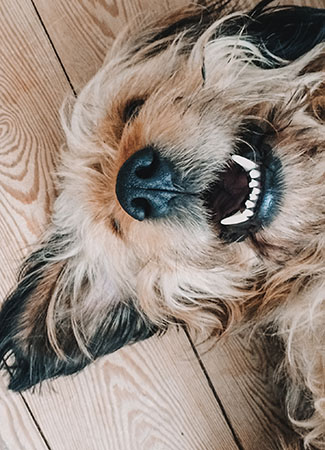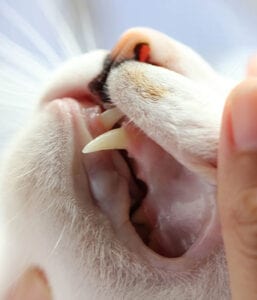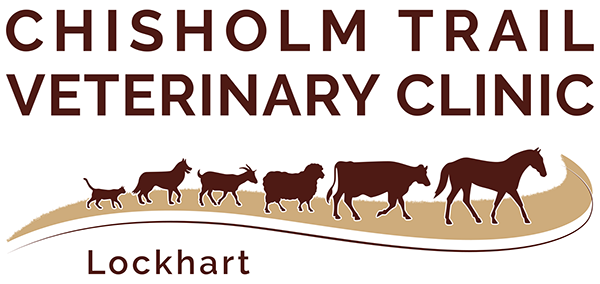Dental Care for Pets in Lockhart, TX
We consider dental health to be an important healthcare action for your pet. Dental problems, such as gum disease or broken teeth, can cause a host of problems for your dog or cat, including:
- Mouth pain
- Bad breath
- Heart disease
- Bacterial infections
At Chisholm Trail Veterinary Clinic of Lockhart, we thoroughly examine and treat your pet’s dental needs through:
- Dental cleanings
- Digital X-rays
- Extractions
PET DENTAL CARE DETAILS
When your pet receives a dental cleaning at Chisholm Trail Veterinary Clinic of Lockhart, we’re committed to providing the best in veterinary care. To keep your pet comfortable and make deep cleaning possible, your pet’s cleaning and dental exams are performed under anesthesia.
IV medications
Your pet is administered fluids and medicine during the dental procedure via an IV. This keeps your pet hydrated and medicated throughout the dental exam and cleaning.
Anesthesia
IV and inhaled anesthesia allow your pet to painlessly sleep through the dental procedure. Anesthesia safety protocols are always in place at all of our Chisholm Trail Veterinary Clinic locations.
Dental examination
Your pet’s veterinarian carefully evaluates each tooth, the gingiva (gums), and the full oral cavity to look for signs of damaged, broken, or infected teeth in addition to gingivitis, periodontitis, and oral tumors. If any disease or abnormalities are detected, the veterinarian recommends the best course of treatment.
Ultrasonic scaling
Using ultrasonic instruments, our veterinarians will remove stubborn plaque from your pet’s teeth.
Low-speed polishing
This tool evens out imperfections in your pet’s teeth to prevent any bacterial adhesions in the future.
Antibiotics
If there’s evidence of an infection, we’ll administer antibiotics as treatment.
Teeth treatments
Sometimes your pet’s teeth need special treatments to seal their teeth. Sealants help protect pet’s teeth from decay and bacteria.
Pain medication
If we suspect your pet could be sore following dental work, we administer pain medication to ease your pet’s discomfort.
By age 3, most pets are already on their way to having dental disease. Don’t let your pet be one of them.
ABOUT GUM DISEASE IN PETS
Many pet owners know that bad breath can be a sign of dental issues. A few other symptoms to look for include:
- Yellow/brown residue along the gum line
- Inflamed gums
- Drooling excessively and often
- Unable to hold onto food
- Irritable and less playful
- Blood-tinged saliva
- Pawing and rubbing at mouth
DIAGNOSIS AND TREATMENT OF DENTAL DISEASE
Dental cleanings are particularly important for pets. In fact, pets can have a higher incidence of dental disease than humans.
Gingivitis (swollen gums) and loose teeth can be caused by infected gum tissues. These conditions leave pets uncomfortable and at increased risk for heart, liver, and kidney disease.
Here’s what you can expect in a dental cleaning to diagnose and treat dental disease:
- We perform all dental procedures with the patient fully sedated. This allows us to examine your pet’s mouth—tooth by tooth—and look for anything abnormal.
- Then, we do dental X-rays to better gauge your pet’s oral health. Most dental pathology takes place under the gum line, so X-rays are essential.
- In the dental procedure itself, we remove plaque and tartar by scaling and polishing the enamel smooth. Removing buildup on the teeth also removes harmful bacteria.
- If your pet has loose, decayed, or broken teeth, they’ll be extracted to improve their health and comfort.


AT-HOME DENTAL DISEASE PREVENTION
Similar to humans, teeth brushing benefits pets. We recommend starting your pet early in life and, before long, brushing their teeth daily will become a habit.
If brushing isn’t possible, we recommend contacting our animal hospital at (512) 620-0111 for alternative options, including dental chews or tartar-control diets.

